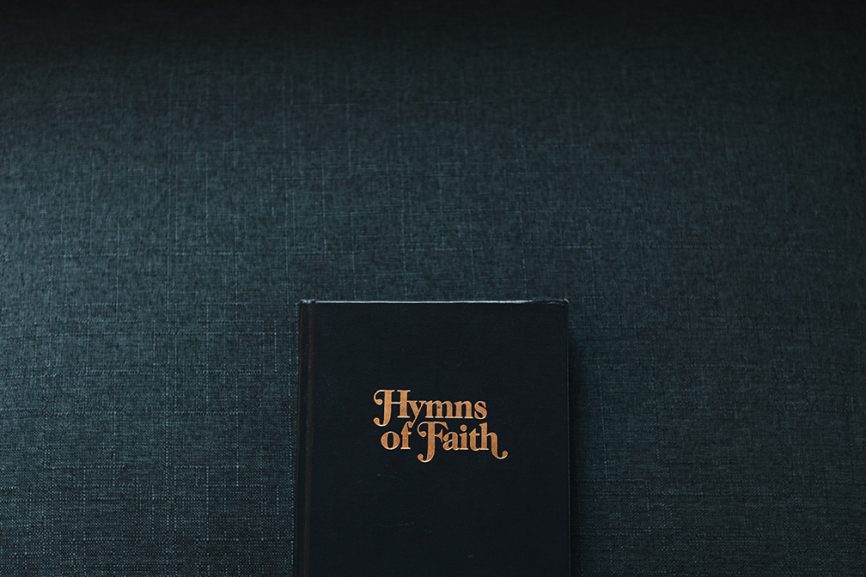This Sunday is Trinity Sunday. And chances are pretty much every Christian church will be singing the same hymn: Holy, Holy, Holy.
So let’s talk about the story behind this hymn, what it means, and an alternative you can use if you tend to be more unitarian than trinitarian.
First, the story:
Reginald Heber was born in 1783 in Malpas, a town in England. At 17 he began studying at Oxford and in 1807 at 24 he ordained as an Anglican deacon and began serving as the rector of Hodnet.
At the start of the 19th century the Anglican church officially disapproved of singing hymns in churches, preferring metrical renditions of the Psalms rather than “hymns of human composure.” But Reginald was an admirer of hymns, like the ones written by John Newton and William Cowper, and he was one of the first High Church Anglicans to write his own.
He wrote dozens of hymns during his time as the rector at Hodnet. Some credit him with up to 100 but most put the number right around 60. He began collecting his hymns, and those written by others, into a hymnal and he organized it by the liturgical season, with specific hymns written for specific days and seasons throughout the liturgical year: Advent, Christmas, Epiphany, Lent, Easter, Ascension, Pentecost.
But that first Sunday after Pentecost, eight weeks after Easter, was a special Sunday in need of a hymn. What should the church sing on Trinity Sunday?
Reginald started writing. And the result was his most well known hymn, a hymn that is included in nearly every Hymnal and covered by artists ranging from Amy Grant to Hillsong to Sufjan Stevens and probably every choir around the world.

So it’s fitting that churches sing Holy, Holy, Holy on Trinity Sunday because it was written specifically for this day!
Thy hymn draws on Isaiah 6 where the prophet sees a vision of the angels crying out, “Holy, holy, holy,” as well as Revelation 4 the same scene is echoed with the direct quotation of the first line of the hymn, “Holy, holy, holy, the Lord God almighty.”
Ironically, neither of these scriptures are trinitarian in nature but pulling Bible verses out of context is nothing new. In fact, the very idea of the trinity isn’t so much Biblical as it is Historical, but that’s another video for another day. And even though this hymn was written specifically for Trinity Sunday, there is really only a single line that references the trinity, the final line of the first and fourth verse: “God in the persons, blessed trinity.”
Let’s talk a bit more about this line: It originates from the Athenasian creed, where it says, “in this Trinity, no one is before or after, greater or less than the other; but all three persons are in themselves, coeternal and coequal; and so we must worship the Trinity in unity and the one God in three persons.”
This creed wasn’t actually written by Athenasius – more on him in a minute – but was written a few decades after his death, in the 5th century, after the Council of Constantinople, the followup to the council of Nicea which was the one that led to what we know today as the Nicean Creed.
It was that first Council, at Nicea, that brought together the conflict between Arius and Athenasius.
Arius’ basic notion was that the Son came into being through the will of the Father; the Son, therefore, had a beginning. Although the Son was before all eternity, he was not eternal, and Father and Son were not of the same essence.
But according to Athanasius, the divine nature in Jesus was identical to that of the Father and that Father and Son have the same substance. He insisted on the word homoousios, where homo means “same” and ousia means “essence” or “being.”
Really, the whole Arius vs. Athanasius conflict is super interesting. If you ever want to wade through some juicy and often unknown church history, this is a good place to start.
But ultimately this is what has led us to the now “orthodox” position on the trinity, of one God in three persons, all being of the same ousia, or essence or being. But there’s still a lot of wiggle room on what exactly is meant by “persons,” not to mention what “essence” or “beingness” they share. For more on this you can dive into the world of the economic trinity vs. the ontological trinity. Super interesting stuff, but we’ll save that for another rant.
And finally, there are some strands who are flat out non-trinitarian, often called Unitarian. So this hymn probably won’t be the first one they turn to on a Sunday morning and that’s why William Channing Gannett, a Unitarian minister, wrote Bring, O Morn, Thy Music in 1893, with lyrics that echo those of Holy, Holy, Holy, and fit the same melody perfectly.
Ok, what about you? What do you believe about the trinity? And what do you think of Reginald’s classic hymn, Holy, Holy, Holy?


Comments
I’m a child of the 1930 generation and remember my love for hymns that tell the story of our faith. This hymn began every Sunday service in the Methodist church in Indianapolis which my Mom walked us to each day of worship. At the age of 20 I married my husband and entered into the UCC studies at Eden Seminary where we began 62 years of study and sharing the gospel and teachings of the Old and New Testament in our shared ministry of pastoral and music. Thank you for your ability to share the history of these early church hymns.
The Trinity means that being created in the image of God means that we are created for community. John’s assertian that God is love makes no sense apart from two or more. God, as one can be loving, but only God, the community, the Trinity, can be love. And God’s coming reign means to biuld a wider circle for all to be included. It means that the community is as diverse as God’s creation. It means the love comes first in all things.
So what do Unitarians believe? Are they Arians and who is Jesus anyway fitting in?
We struggle for human language to describe the holy – as Brian Wren notes “what language can we borrow….” Metaphors likewise fail us. Few think about how the father-son metaphor changed when the truth of human genetics was revealed in science or the way that the meaning of important theological words like faith have shifted in common usage. There will always be this challenge in language of trying to name what is so great that we cannot imagine it whole-ly.
I appreciate the history of ‘defining’ the infinite. It’s intriguing, almost entertaining, to THINK ABOUT “what’s God inmost
life like” when we have a lifelong trek through our human self-understanding. For hymns I’m using COME, O MERCIFUL
KING (uses Father all glorious..O Incarnate Word…holy Comforter) ; O GOD ALMIGHTY FATHER; SING WE PRAISE TO THE FATHER….THE LIVING GOD, HALLELUJAH